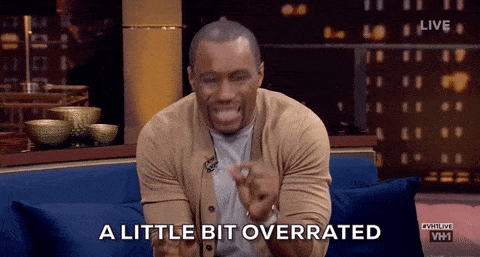HOW WRAPPED BITCOIN WORKS
The purpose of the new cryptocurrency is to enable Bitcoin users to “participate in Ethereum smart contracts natively on the Ethereum blockchain.”
Last October Bitcoin custody company BitGo announced a partnership with Kyber Network and Republic Protocol to launch Wrapped Bitcoin (WBTC), a token on the Ethereum blockchain that acts as a 1-to-1 token backed by Bitcoin reserves.
In a blog post announcing the new token BitGo stated:
“WBTC users will be able to utilize Bitcoin in a wide variety of new decentralized use cases, including on decentralized exchanges (DEXs), as collateral for stable coins or lending, for payments and flexible smart contracts within the Ethereum ecosystem.”
Then your Wrapped Bitcoin can fly around the Ethereum ecosystem while the Bitcoin that backs it, and for which you can ostensibly redeem your WBTC at anytime (again by going through the merchant account), sits parked in the custody of BitGo or Kyber.
The way to acquire WBTC, an ERC-20 token on the Ethereum virtual machine, is to buy one from this consortium of cryptocurrency startups by trading in Bitcoin for a “Wrapped Bitcoin,” a transaction that can only be made through an approved merchant account on the Ethereum network (of which there are currently eight):
“To receive WBTC, a user requests tokens from a merchant. The merchant then performs the required KYC / AML procedures and verifies the user’s identity.”
“Once this is completed, the user and merchant execute their swap, with Bitcoin from the user transferring to the merchant, and WBTC from the merchant transferring to the user.”
WHY I THINK WRAPPED BITCOIN IS JUNK
1. HODL
I’m not a Bitcoin maximalist, but I think it’s a very good idea to hodl Bitcoin.
Selling your Bitcoin for anything, whether it’s Federal Reserve notes, or a speculative investment in a new Ethereum token, yet another bright idea in the relentless treasure hunt for TNBT, is not hodling.
2. ETHEREUM DECENTRALIZATION IS OVERRATED
As David Hundeyin reported for CCN on the same day as BitGo’s announcement last October:
“New data from cryptocurrency prime dealer SFOX has painted a somewhat bleak picture of the current state of dApp development on the Ethereum network.”
“Using a Jupyter Notebook to query Google’s public Ethereum dataset hosted on BigQuery, SFOX has revealed that of the top 10 Ethereum smart contract addresses by transaction volume, only one is held by a dApp.”
WBTC proponents may counter that there is a chicken and egg problem here, and more liquidity will drive more dApp development, but the dream of your Bitcoin fueling decentralized activity on the Ethereum network is far from the current reality.
3. WBTC ISN’T REALLY DECENTRALIZED
Its creators are touting Wrapped Bitcoin as a step forward for decentralization. But in one very important respect, it’s actually the exact opposite of that.
They are asking people to take their Bitcoin, which is on a decentralized, peer-to-peer network, and hand it over the custody of a centralized, trusted third party.
Users have to get permission from a centralized third party platform to “mint” a WBTC by selling them Bitcoin, and then have to get permission again to “burn” their WBTC and redeem it for their Bitcoin.
4. IT’S A STABLECOIN
A columnist at Forbes once breathlessly called stablecoins the Holy Grail of cryptocurrency, but these tokens are half-baked schemes to create a non-volatile cryptocurrency using a network architecture that pegs them to the value of another currency (like the USD or in Wrapped Bitcoin’s case– Bitcoin).
But how are they actually worth the real thing for which they are an overt counterfeit? Answer: If you can sell them to a greater fool than you. I’d rather hodl the thing itself.
5. WHO NEEDS A DIGITAL PAPER BANKNOTE?
Wrapped Bitcoin’s proponents are actually likening WBTC to the paper banknotes of old that used to be redeemable for gold.
They’re calling it the digital equivalent of a paper banknote backed by gold reserves (and BTC is the gold), but BTC is already portable. It goes with me anywhere I go, and it doesn’t weigh down my pockets or my horse-drawn carriage.
6. WBTC REQUIRES TRUSTED THIRD PARTIES
BitGo says:
“For the first time, this digital asset will be tokenized with full proof of reserve, backed 1:1 with Bitcoin. Every Bitcoin will be accounted for on a dashboard displaying addresses and balances, and users will be able to verify on the blockchain each Bitcoin that is held in custody. This can be done by comparing the exact number of Bitcoin stored with the total supply of WBTC in circulation via a blockchain explorer like Etherscan.”
It’s good that the Bitcoin reserves backing your WBTC token will be verifiable in a transparent platform, but “verifiable and transparent” still falls short of the Bitcoin gold standard of completely trustless banking.
Wrapped Bitcoin is independently verifiable and transparent, but it is not trustless.
People keeping a portion of their investments, savings, or cash as WBTC will still have to trust a number of third parties to remain solvent and to keep their own Bitcoin reserves secure from hackers.
This falls short of and dilutes the value proposition behind Bitcoin–– that those who hold assume everyone is incompetent or unscrupulous from the outset, and that it doesn’t matter. They don’t have to trust any third party.
7. WE DON’T NEED NO STINKING TOKENS
WBTC is a token, not a coin. A coin is something useful as currency, which can be traded for basically anything someone may want to pay for, but a token is aptly named because it’s like the tokens you buy at arcades: it has more limited use cases.
When you buy a token at the arcade, you’ve traded your money that you could have bought anything else with for a token that you can buy only one thing with: video game plays at that one arcade.
I never refer to Bitcoin as tokens, because Bitcoin is money, and its use as a global currency is intrinsic to its design. But use as a token for powering Ethereum apps is intrinsic to WBTC’s design. That’s the only thing you can do with it. That’s the only thing it’s designed for you to do with it. Bitcoin is designed to be the Internet of money.
From: CCN.Com














No comments:
Post a Comment